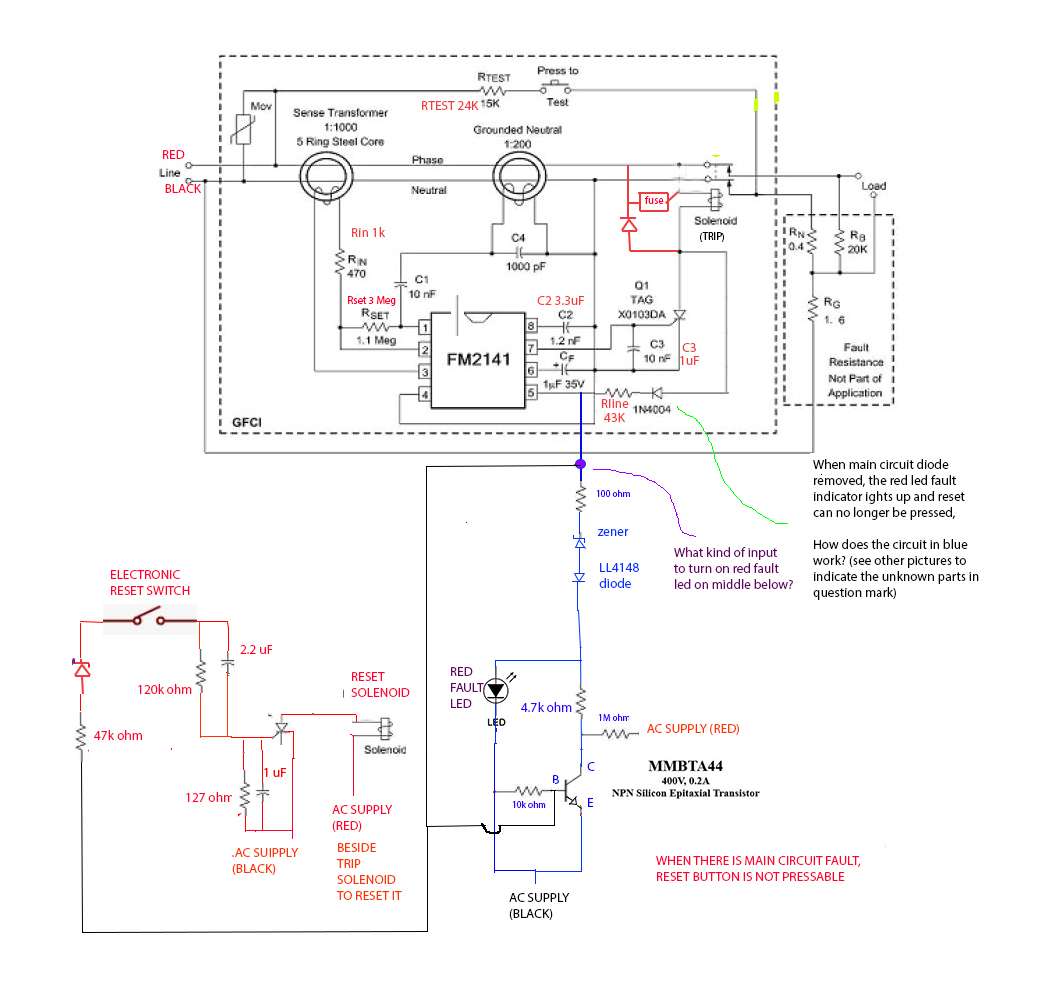190119-0850 EST
tersh:
The PNP is only rated 65 V. Can't put PNP, 4.7k, and LED in series across an AC 240 V line. Things will blow up. Not one of the components could tolerate this. Both the forward and reverse directions are a disaster.
.
Are all PNP rated 65V? Someone at stack exchange identify the tiny transistor as PNP. Maybe another model of PNP. Note in the actual pcb picture, you can see the emitter of it (or whatever it is) connected to the AC black line.
Also in the Rline of 43K in series to the diode you asked me to remove. In a brand new PCB. I only measure 12volts in the Rline leading to the violet dot.

The Reset is connected to the top of the receptacle. It's on the right. The two red wire is connected to the button. In the left Test button, one is connected to load line, while there is a resistor going to outside line (as is how Test button) connected.
I can easily connect the sense coil of the 4th gfci pcb and it will be working but can't be put back in service. And I don't have the skill to look at it furthermore and learn the real source of the transient or current imbalance and how it affects the sense coil and pin 1,2,3. So maybe I can just send it to you along with the water shaded pole motor? I will never use it anymore. I avoid anything above 3mG. And the motor is about 200mG from my brain.













